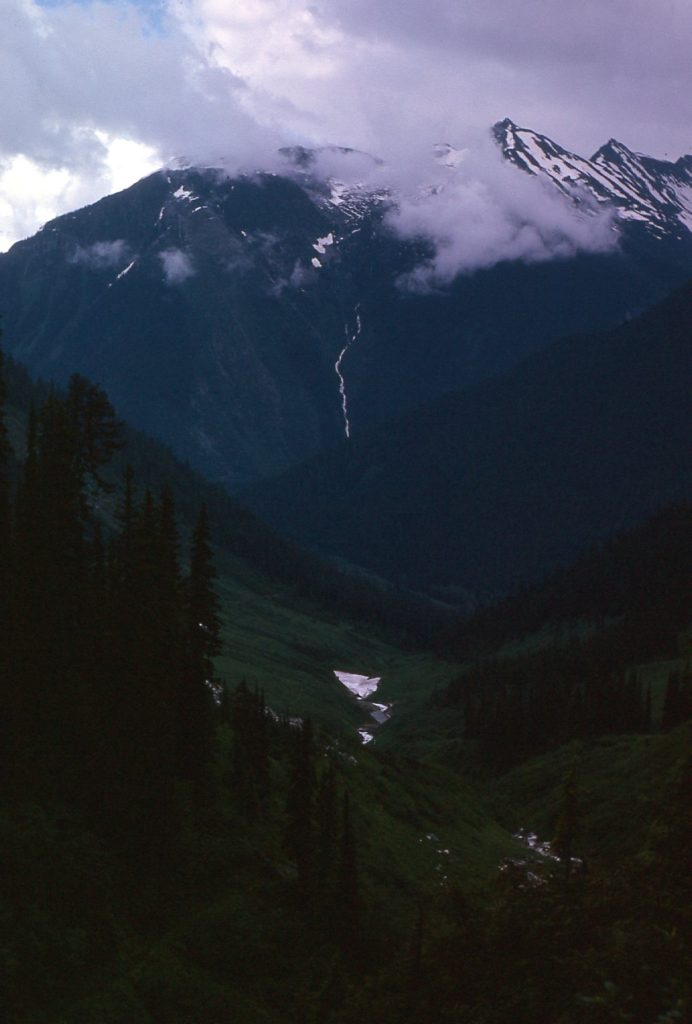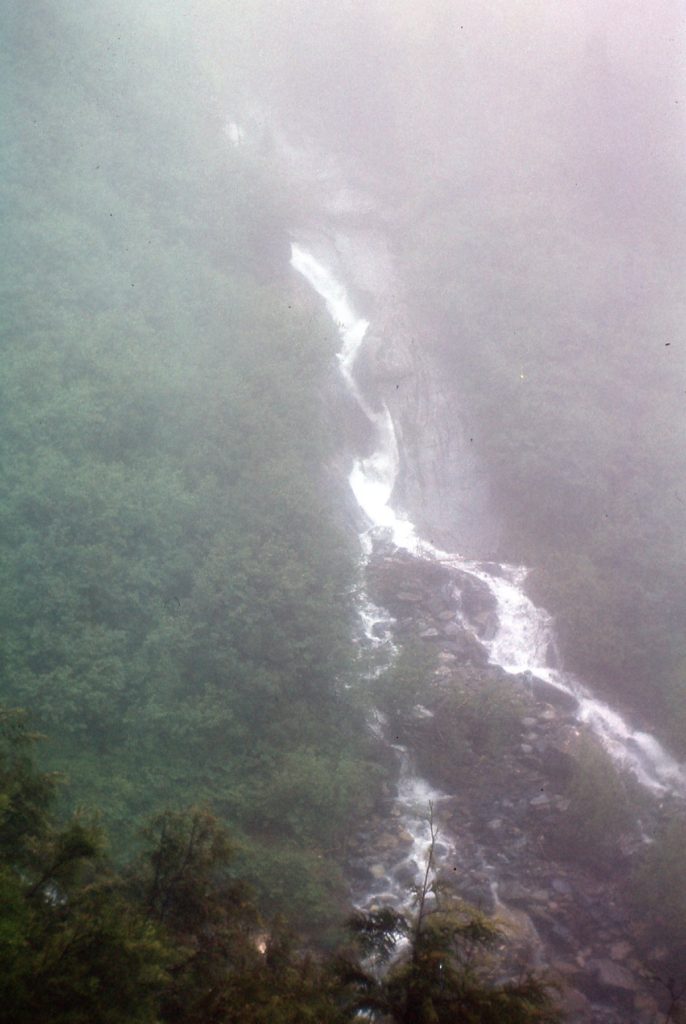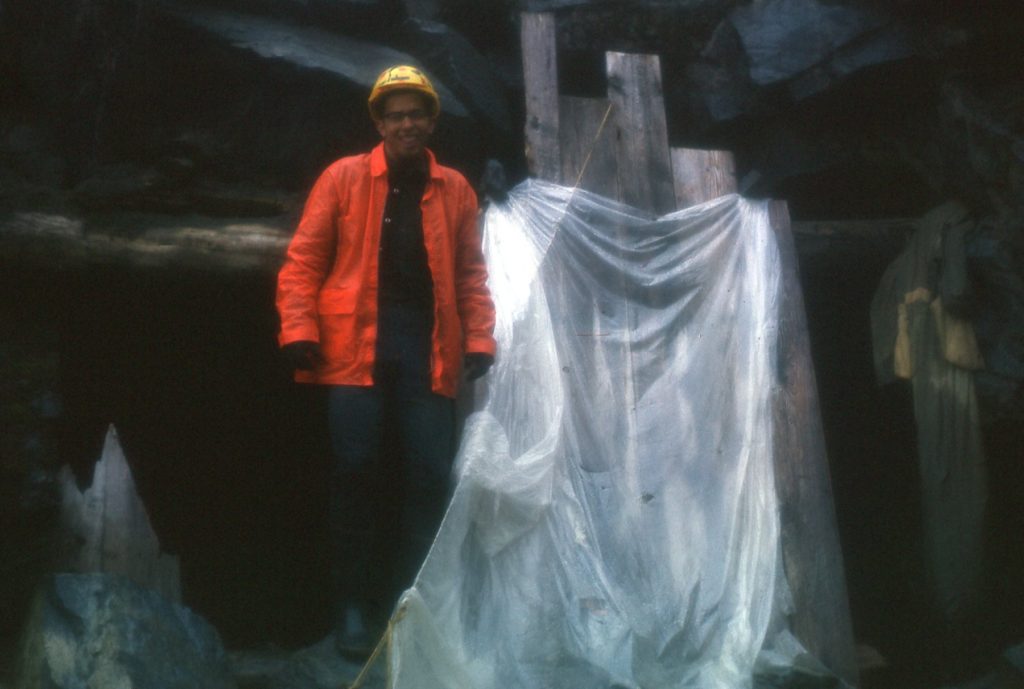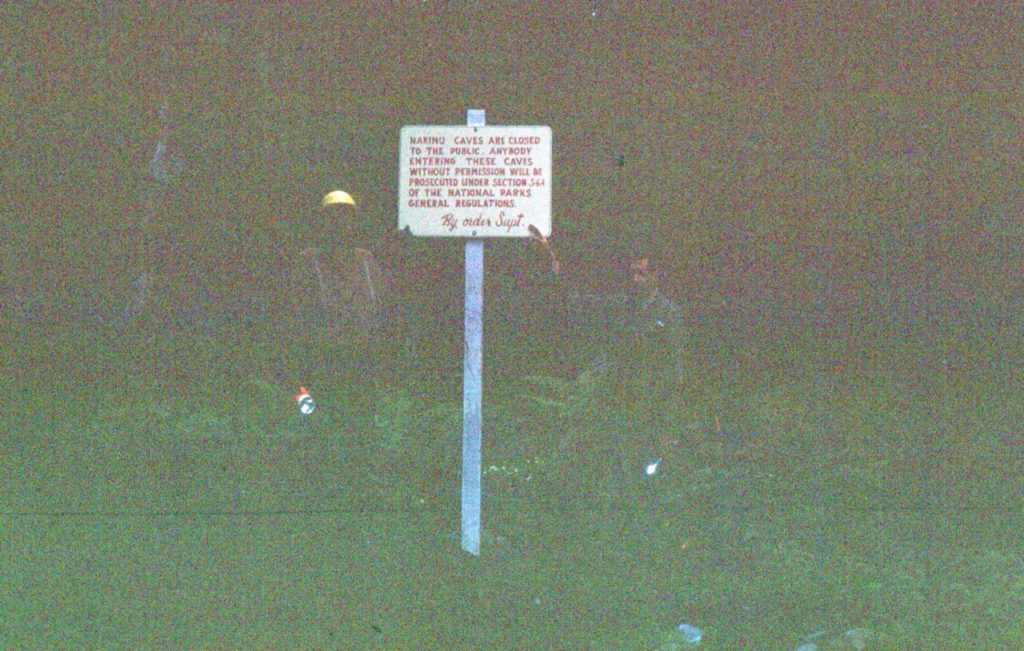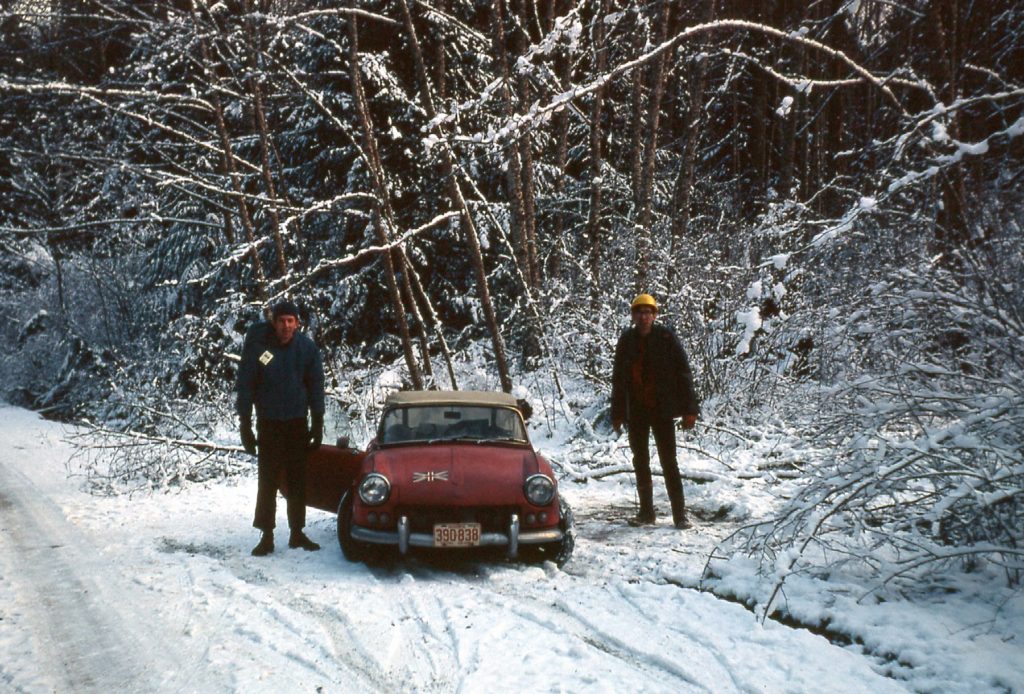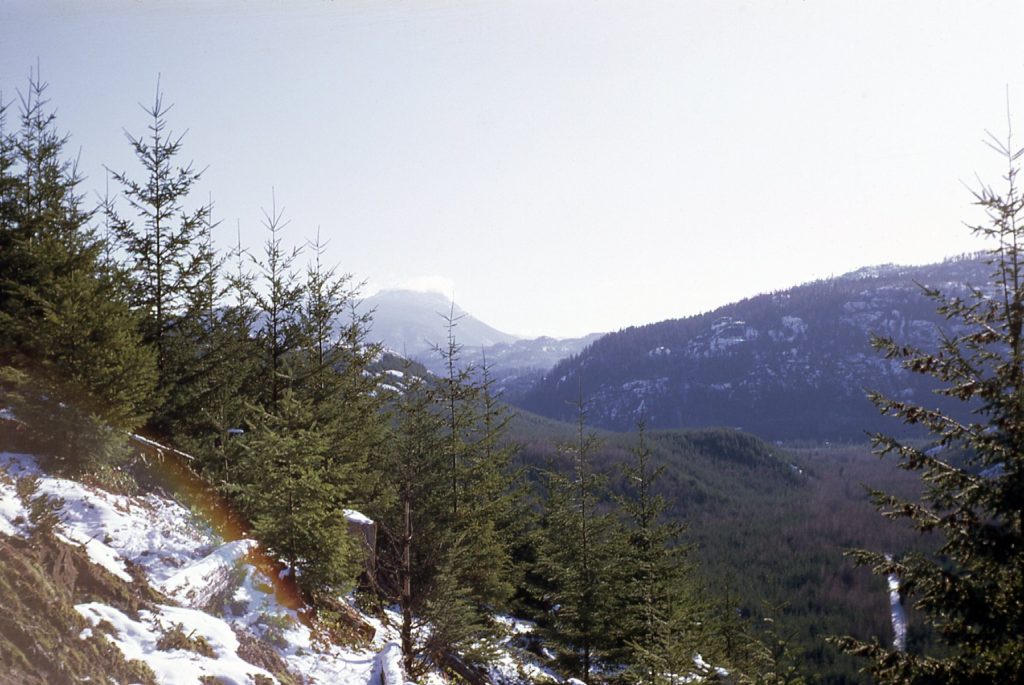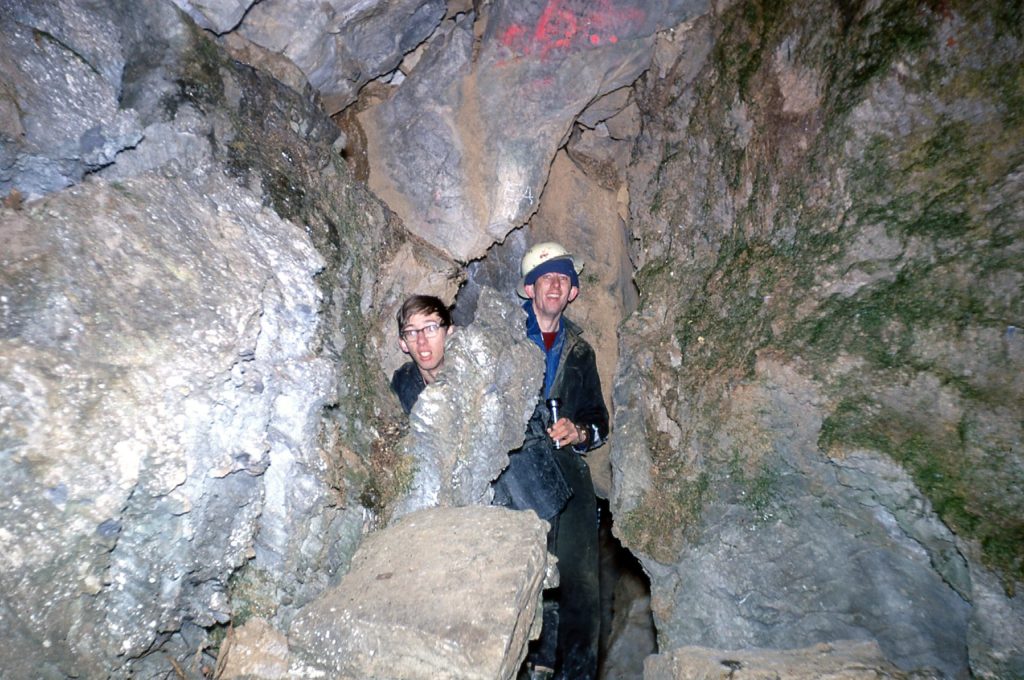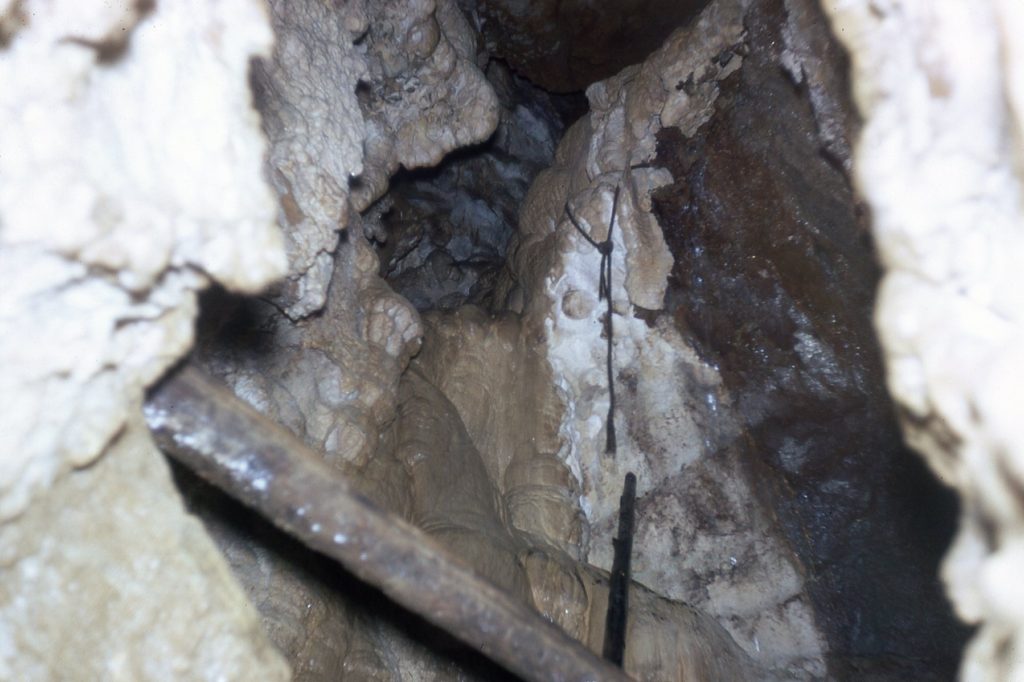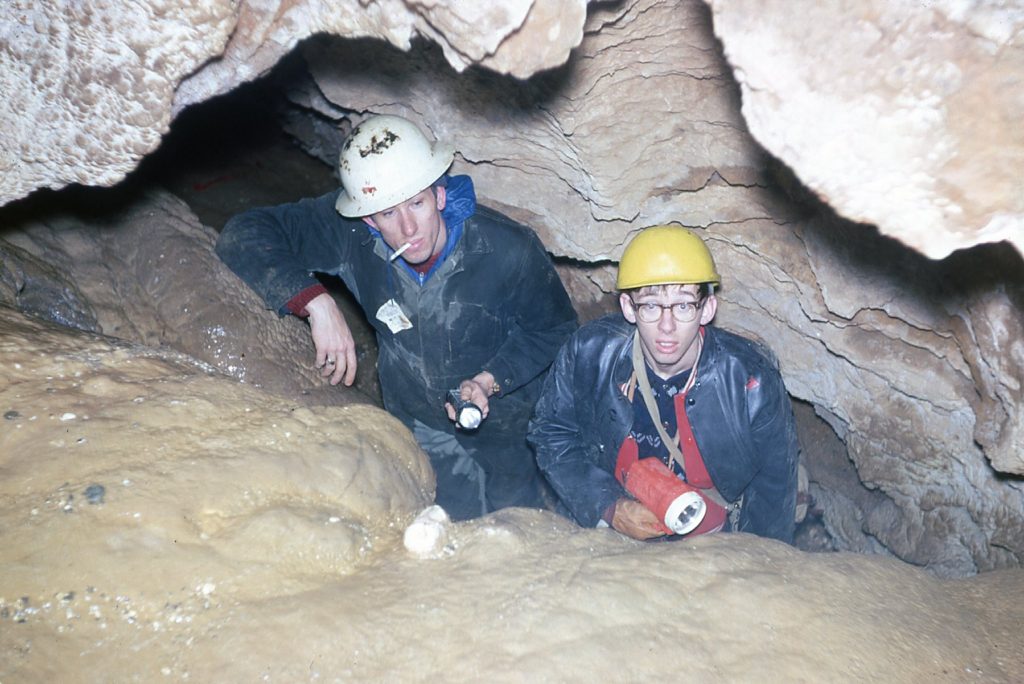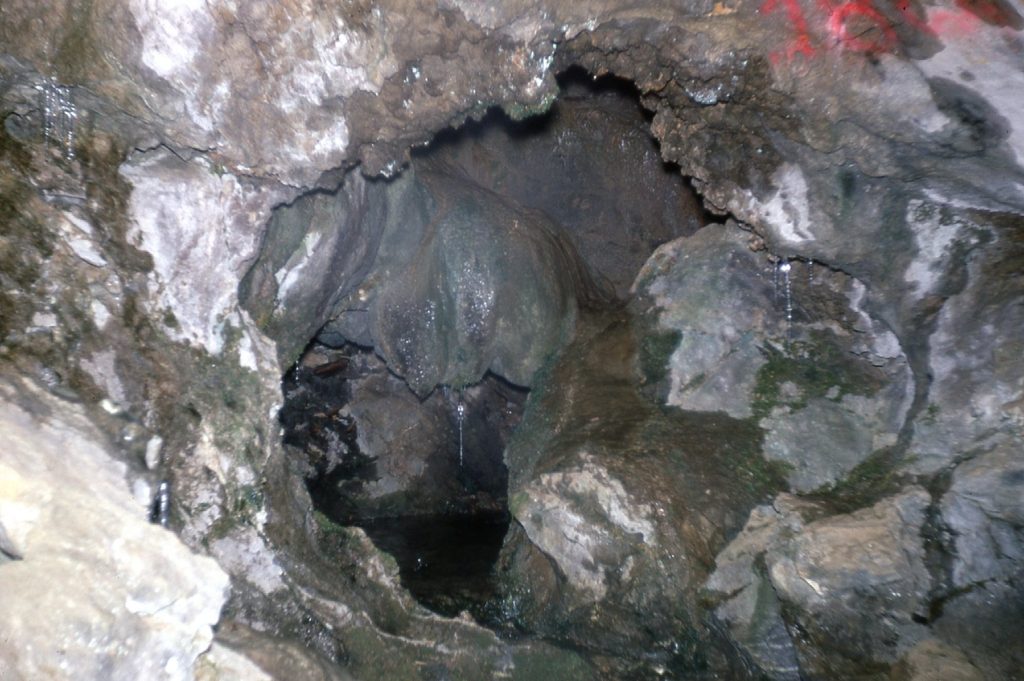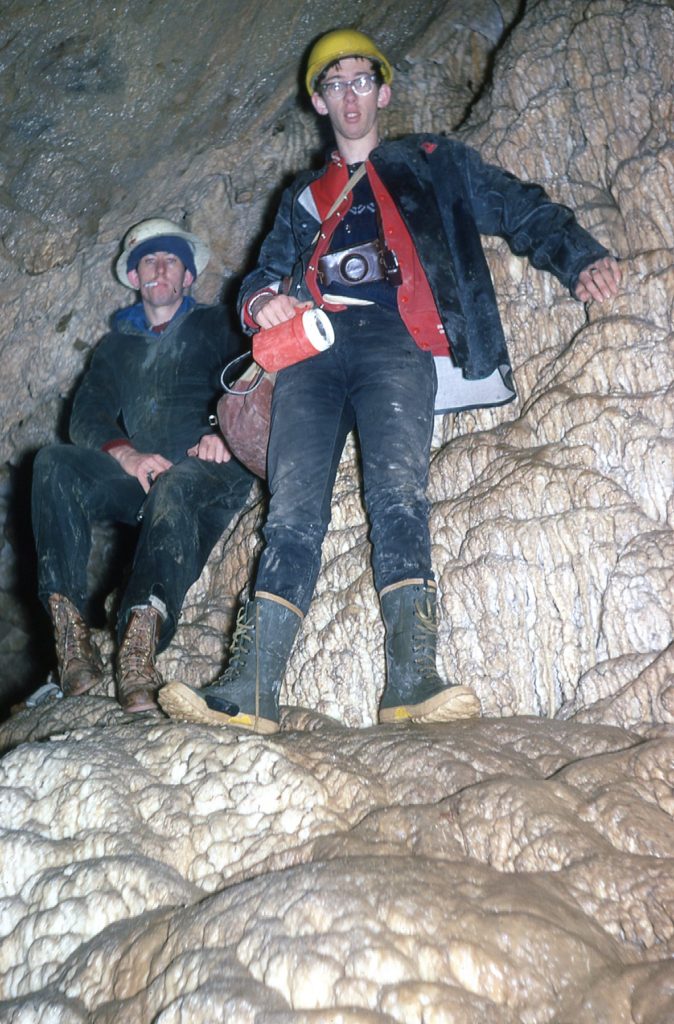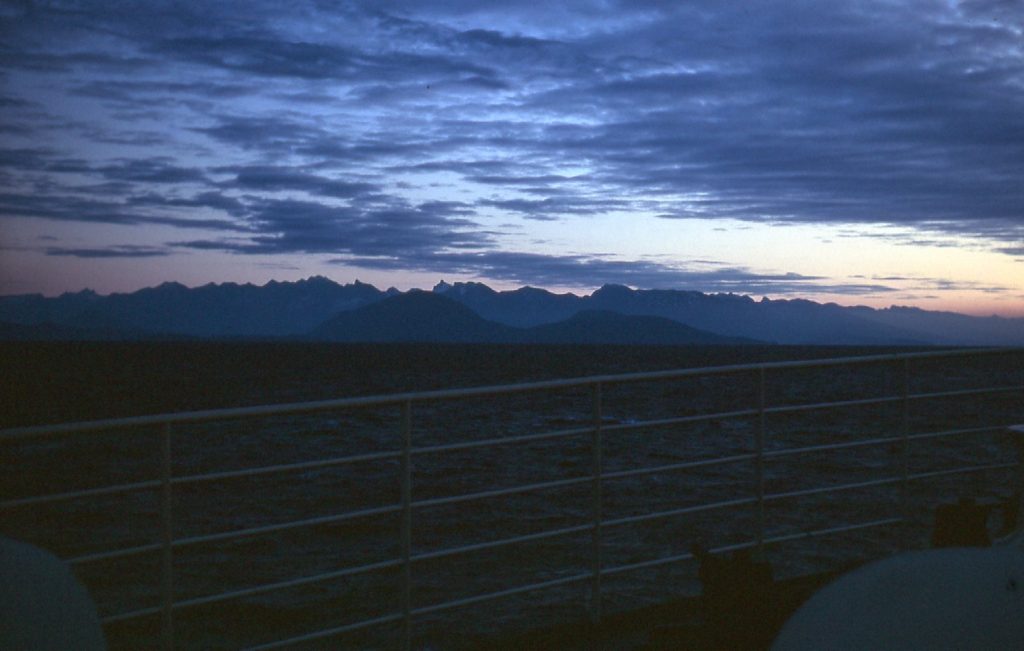Before I start this story, I need to tell you something important. When I moved away from home in 1964, I had just turned 17. My mother gave me a little parting gift of a diary as I was on my way to attend university, telling me that she thought I’d appreciate looking back on it someday. Well, she was right – I enjoyed keeping the diary so much that I bought another the following year and every year after that. I kept personal diaries, work diaries and climbing diaries – I still keep one today. That’s why I can go back in time the way I do and reconstruct the stories I write with such detail. I figured I should let you in on my secret.
So, way back in the summer of 1965, I was working at a sawmill in a small town in the interior of British Columbia, Canada. A friend who worked in the local bank suggested one day that we should go to a place in nearby Glacier National Park (the one in BC, not the one in Montana) and explore some caves. We knew absolutely nothing about caving, so were ill-prepared. We made our way there after much effort and found the entrance. To our dismay, there was a sign posted near the entrance, clearly stating in no uncertain terms that the caves were closed to the public. That wasn’t going to stop us, though, we were determined to go in and explore. We had a long roll of string and a couple of poor flashlights. It was pretty scary, and as I recall we didn’t go in terribly far and see very much. Nevertheless, it was my first stealth, and a good one at that, being on federal land as it was.
Fast-forward to 1966. That summer I was back working in the same small town of Golden, BC. The same friend suggested that we go back to the same place, known as Nakimu Caves, and really explore the place properly. This time there would be 3 of us instead of 2, as my room-mate from university (who was working at the same mill as I) would join us. Came the fateful day, August 1st, and away we went. I’m not quite sure what possessed us to do it, but we stopped in at the park headquarters to talk to the folks there. We ended up speaking with the superintendent himself, and asked him if he could tell us anything about the caves. He immediately told us that the caves were strictly off-limits and to not even think of going there. Of course, we told him we had no intention of going there, that we were just curious. He then told us, and these were his exact words: “Last year, a couple of idiots went in there with a roll of string and half a light between them.” Classic, words I’ve remembered to this day. I have to say that we were surprised to learn how much he knew.
Let me tell you something about Nakimu. First, the name. In the Secwepemc language of the nearest Indian tribe, it means “grumbling spirits”, a name inspired by the throbbing cascades of Cougar Creek as it disappears from a subalpine forest into a series of sinkholes in the park. Way back in 1904, the caves were first explored by one Charles Deutschmann. This was back in the era when the railway, which passes nearby, was trying to drum up tourist traffic to the area. They put in a road and built a tea-house near the entrance to the caves, which was used into the 1920s. Adventure-seekers were guided through the caves by Deutschmann himself, working as the first interpretive guide ever hired by the Canadian parks service. During that era, they installed a lot of wooden ladders and walkways to make getting around easier. After the 20s, the caves were pretty much abandoned and the man-made appurtenances fell into a state of disrepair.
In our 1965 visit to the caves, we took no pictures. In the follow-up visit in 1966, we took a few but, sadly, they are pretty pathetic. I’ll share with you what I have, though. It was a 4-hour hike up the old road involving 800 meters of climbing, quite overgrown in places, to reach the main cave entrance. This route is prone to avalanches in the winter and is a known habitat for female grizzlies in the summer months. Naturally, it was a gloomy, rainy day when we went. Here are a couple of pictures from near the main entrance.
We were well-armed with good flashlights, headlamps, spare batteries, chalk and anything else we thought might make our visit safer. Once inside, we were amazed at how extensive the caves were. There were rooms large and small, passageways of all types and sizes, and all manner of interesting formations. In places we had to crawl. One spot that I still remember vividly was where were went through a passage, standing up, but had to turn our heads sideways to squeeze through the narrow walls. It’s a good thing we were all skinny as a rail, otherwise we wouldn’t have made it. In one place deep in the caves, we came to a room where the floor was filled with water but it was frozen solid, smooth and flat. After some time, we came to a natural shaft where a decrepit wooden ladder went straight up to a different entrance.
A year or two after our visit, a team of graduate students from McMaster University in Hamilton, Ontario paid an authorized visit to Nakimu. The Parks Service had hired them to do some detailed mapping inside the caves, and their exploration revealed no less than 7 different entrances to the caves. Over 6 kilometers of passageways were mapped, and the crew knew that there was more that they hadn’t time to reach.
There was one spot we found where we looked down into a deep cavern to Cougar Creek itself as it roared through the very bowels of the cave, deep inside the mountain. It was a scary spot and certainly put the fear of God into us. If anyone fell down into such a place, there’d be no surviving it. We spent a total of 3 1/2 hours inside Nakimu that day, and when we finally emerged, we were soaking wet and covered in dirt. Here I am at the main entrance, where parks folks had placed a makeshift barrier.
When we first arrived early that day, this sign greeted us near the main entrance.
We slogged our way back down to our vehicle in the rain and were glad for the adventure we’d had. George and I eventually returned to Vancouver and continued our studies at the university.
About a year and a half later, Ed contacted us. He was living near Vancouver, and wondered if we’d be up for another caving adventure. Sure, why not? On January 26th of 1968, a Friday, he arrived in his sports car and picked us up. We drove in the dark to the terminal at Horseshoe Bay and caught the 10:00 PM ferry to Nanaimo on Vancouver Island. Once docked, we drove into the night to the north along coastal Highway 19 and finally stopped near Bowser. We were not quite sure how to get to our destination, Horne Lake, in the dark, and it didn’t help any that we’d never been there before. We pulled over and camped under the stars well after midnight, just pitching our sleeping bags on a groundsheet beside the car. Here’s our bivy spot, where it dropped to 15 degrees F overnight.
The next morning, we couldn’t wait to get started. Our goal was to find something called the Horne Lake Caves. We drove and drove, but the directions Ed had were poor. Hours passed, without luck. Much of the afternoon had slipped on by when we finally decided to try to get some directions. We drove back out to the town of Parksville where we found someplace with a map and somebody who had a clue how to get to the caves. New directions in hand, we drove back north and out to Horne Lake, where we soon found ourselves standing at the cave entrance. It was late afternoon and getting dark. Here’s one photo I took while we were driving around that afternoon.
In we went, armed with good lights and a camera with a flash. We didn’t know much about what to expect, so it was a bit of an adventure. There were 2 caves we explored that day, spending a total of 3 hours inside. The temperature was a steady 47 degrees F wherever we went in the caves. Here are several photos I took that evening. This one shows the entrance to the first cave.
Once inside, we found passageways and also some steep holes. Here’s one, looking up.
Here’s George, and Ed trying to look macho (he didn’t even smoke).
These pictures show that the cave appears dry, but there were places where water was running. One strange thing happened. One of us was eating some chocolate-covered raisins and accidentally dropped a few into a rivulet. Hours later, we came back past the same spot and noticed that the raisins had turned white – in our short absence, some chemical in the clear water had precipitated on to the surface of the candy. Interesting! After spending time in the first cave, we exited and found our way to a second cave. Here was its entrance.
The second cave was just as interesting, and had a lot of nice formations. We went in all the way to what seemed like the farthest end of the cave. Here is what we saw.
By the end of 3 hours, we had seen all of the 2 caves that we could easily access. When we stepped outside, an icy blast of wintry night air greeted us. It was pitch-black, and we drove a while until we found another spot to camp. Like the night before, we pitched our sleeping bags under the stars and enjoyed another 15-degree overnight low. Very early the following morning, we drove the remaining distance to the terminal in Nanaimo and boarded the first ferry of the day, departing at 7:00 AM. Here’s a view, just before sunrise, into the Coast Range taken from the frigid deck of the ship.
We lost track of Ed and never saw him again. From my side, I have had little to do with caves since 1968 – mountains aplenty, but caves, none. I am grateful to Ed, though, for pushing us to explore Nakimu Caves with him, although it was forbidden by the Parks Service, and later to head out in the middle of winter to explore Horne Lake Caves. A few short years later, in 1971, the BC Provincial government created Horne Lake Caves Provincial Park to protect this unique spot for everyone. I’m kind of glad we saw it back in the good old days the way we did.

